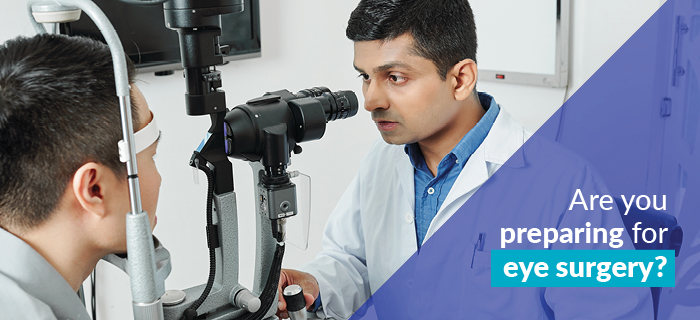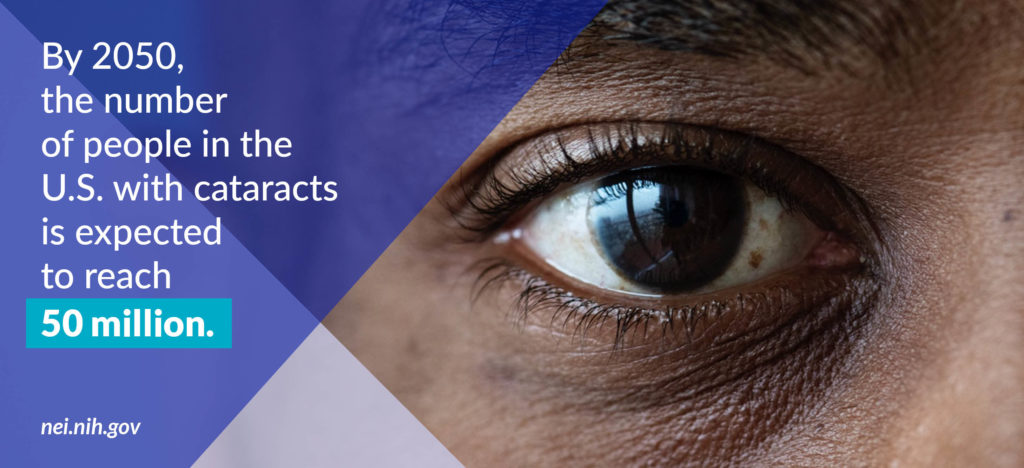Eye Surgery
Eye surgery is used to treat a variety of conditions, including cataracts, glaucoma, detached retinas, retinal tears, diabetic retinopathy, and nearsightedness or farsightedness.

What are some types of eye surgery?
Common types of eye surgery are explained below. The descriptions incorporate information provided by the National Eye Institute, National Institutes of Health.
Blepharoplasty. To repair droopy eyelids, the doctor makes a small incision or incisions to remove skin and muscle and to remove or reposition fat.
Cataract surgery. A cataract is a cloudy area in the lens of your eye that can make it hard to see clearly. The doctor uses tiny tools to remove the cloudy lens and replace it with an artificial lens.
Corneal transplant. The doctor uses a special tool to keep your eye open while removing the damaged part of your cornea and replacing it with healthy donor tissue. Doctors can do a full thickness corneal transplant (penetrating keratoplasty) or a partial thickness transplant (lamellar keratoplasty).
Glaucoma surgeries. For glaucoma implants, the doctor inserts a tiny tube called a shunt into the white of your eye; the tube helps extra fluid drain out of your eye, lowering your eye pressure. In a trabeculectomy, the doctor creates a tiny opening in the top of your eye, under your eyelid, to allow the extra fluid to drain.
LASIK (laser in-situ keratomileusis). In this laser eye surgery, the doctor uses a strong beam of light (laser) to change the shape of the cornea, which makes vision clearer for adults with nearsightedness, farsightedness, or astigmatism. Photorefractive keratectomy, commonly called PRK, may be used as a LASIK alternative for patients with dry eyes or thin corneas.
Retina surgeries. There are several procedures for repairing a damaged or detached retina, some of which may be used in combination. To create small scars that will fix a tear or hole and help hold your retina in place, the doctor may apply a freezing probe (cryopexy) or shine a laser to make a small burn (photocoagulation). In scleral buckle surgery, the surgeon places a tiny, flexible band around the white part of your eye (the sclera); this band gently pushes the sides of your eye toward your retina to help it reattach. In pneumatic retinopexy, the doctor injects a small air bubble into the middle of your eyeball to push your retina back into place before applying the freezing or burning treatment; the bubble will disappear on its own over time. A vitrectomy involves the use of a suction tool to remove most of the vitreous (the gel-like substance that fills the eye), allowing the surgeon better access to the retina and providing room for the bubble.
Special anesthesia note for pneumatic retinopexy patients: If you are scheduled for any type of surgery soon after undergoing pneumatic retinopexy, it is critical that you let your anesthesiologist know about it before your surgery. Some anesthetics can interact with and change the size of the air bubble, which may remain present in your eye for five days to several months after your eye surgery.
Eye muscle surgery. Strabismus is a condition in which the eyes don’t move together as a pair; one eye might drift in, out, up, or down. Surgery isn’t the only treatment option, but when it is needed, a surgeon attempts to restore the eye muscles to a proper position by using techniques that weaken or strengthen them. This could involve removing a section of muscle or reattaching a muscle to a different point in the eye.

What are the considerations for anesthesia during eye surgery?
There are some types of eye surgery in which general anesthesia, which keeps you unconscious during the entire procedure, is either necessary or an option. However, it is more likely that you will receive monitored sedation to relax you, with a complementary regional anesthesia block to prevent you from feeling any pain. Sedation is usually provided through an IV placed in a vein. Blocks are provided through an injection near the eye.
Although the level of sedation varies depending on the procedure and the patient, it will most often be minimal so that you remain awake while feeling relaxed. This level of sedation is very important for eye surgery because the doctor does not want your head to move. That can happen if you are sedated to a point where you are confused or fall asleep and snore. A special consideration for blepharoplasty is that too much sedation can make your eyelids appear droopier than they typically are, resulting in an overcorrection by the surgeon.
Monitored sedation is also preferred in most cases because of the positioning of the surgeon and anesthesiologist during eye surgery. For most other surgeries, the anesthesiologist is stationed by the patient’s head, with the surgeon near the middle of the body. For eye surgeries, the positions are reversed. That makes it more difficult for the anesthesiologist to intervene quickly to take corrective action if the patient has breathing difficulties, which are more apt to occur under general anesthesia.
For some eye surgeries, like LASIK, the application of numbing eye drops as a topical anesthetic is enough to keep you comfortable during the procedure.
Are there special anesthesia considerations for children?
Yes. In most cases, children will receive general anesthesia. This is usually necessary because it is difficult for them to remain still under monitored sedation.
Are there medical conditions that can complicate eye surgery?
Yes. Conditions that interfere with a patient’s ability to remain in a relatively flat and still position during surgery can be problematic. Alert your anesthesiologist before surgery and consider a preoperative visit if you have a condition such as reflux, back pain, emphysema, or even a temporary cough. Discuss potential accommodations and surgery timing.
What should I do to prepare for surgery?
You will be told not to eat or drink for a certain period of time before surgery. Make sure you know how far in advance you need to stop eating and drinking. You should also ask which of your medicines to continue to take before the surgery and which to discontinue and when.
Most eye surgeries are done on an outpatient basis, so you will go home the same day. You will not be able to take yourself home, so you will need to make arrangements for a friend or family member to provide transportation.
Will I see what is happening during my surgery?
Under general anesthesia, you will be unconscious and unaware of what is happening.
Under monitored sedation, you will remain awake but will not see what the surgeon is doing. The eye that is being operated on will be anesthetized and effectively unconscious. The other eye will be covered.
If you receive topical anesthesia, you may see lights, colors, and shadows. You may also be given medicines to help you stay relaxed.
